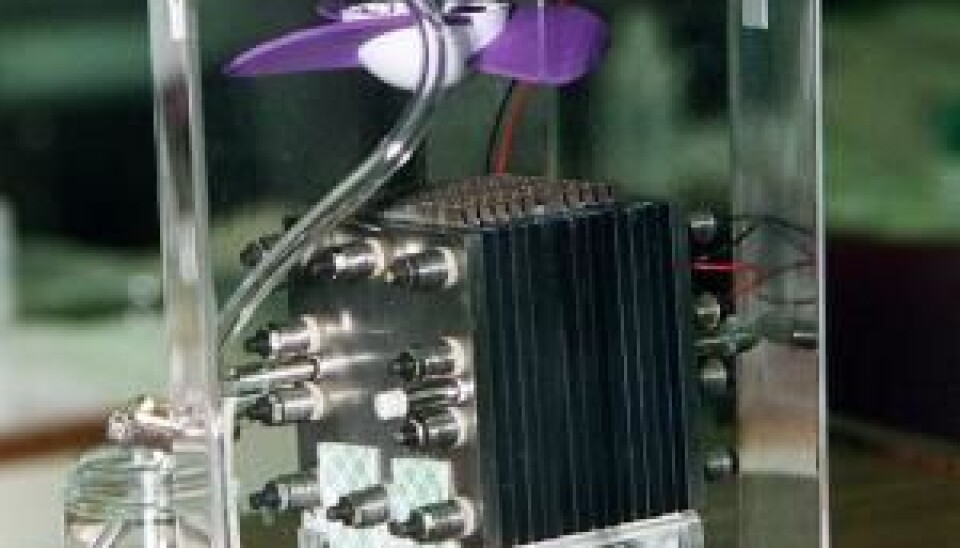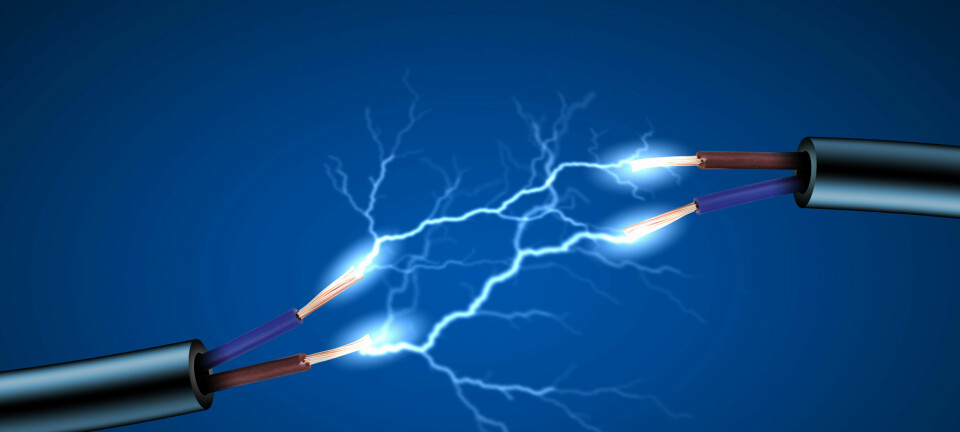
New biofuel cells will retire toxic metals
Natural enzymes can replace the expensive and toxic precious metals used in fuel cells.
Fuel cells are an attractive option for future energy technologies--the small devices silently convert hydrogen into electricity and the only waste product is water.
They are flexible as they can be developed to make use of many types of hydrogen-based fuels, and can in principle be used in anything from biogas plants and wind turbines to household appliances and mobile phones.
Fuel cells are environmentally friendly to use, but their manufacture involves the use of precious metals, like platinum. These are not only rare and expensive, but also pollutants as they are emitted into the atmosphere as tiny particles during fuel cell manufacture.
For this reason, fuel cells are often a less attractive option than other well known, cheaper technologies.

A new research project at the Technical University of Denmark (DTU), will explore the possibilities of developing a purely organic-based fuel cell, which will bypass the use of such precious metals and help make the cells cheaper and more environmentally friendly to produce.
"It’s an ambitious project. If things go really well, we’ll be able to produce a prototype of a biocatalyst for a fuel cell,” says project leader Zhang Jingdong, who is an Associate Professor at the Nano Chemistry group at DTU.
“And even if we don’t fully achieve it, we’ll still have been able to push on and explore the possibilities of these new types of fuel cells. I’ve great confidence in the project and I’m excited to get started," says Zhang.
The project is funded by the Danish Council for Independent Research.
Precious metals no longer needed
Just how do these fuel cells work?
A fuel cell consists of two electrodes separated by a membrane and an electrolyte. Hydrogen (or some other fuel) is added to the first electrode (the anode), which cleaves electrons and protons from the fuel.
The protons migrate through the electrically insulated membrane while the electrons are sent in the opposite direction, forming part of an electric circuit.
Protons and electrons meet again at the second electrode (the cathode), where they combine with oxygen to produce water.
A catalyst is needed in order to cleave the fuel of protons and electrons, which is usually in the form of precious metals. But Zhang and colleagues intend to avoid the metals, by imitating nature's own way of converting chemical energy in biological cells.
Biological cells use enzymes for their catalysts, and this has inspired Zhang to find similar enzymes to replace the precious metals in their biofuel cells.
Four challenges need to be overcome
The scientists need to overcome four main challenges to make this work:
Firstly, the chosen biomaterials need to be inexpensive to produce if the cells are to be commercially viable products.
"We already have many candidates that we'd like to test. In particular the cheap ones, as these cells need to be cost-effective," says Zhang.
Secondly, the biomaterial should be able to operate optimally at a neutral pH so it does not require a particularly alkaline or acidic environment. This would damage the fuel cells’ durability.
Third, the catalysts should be able to operate at around room temperature.
Finally, the biggest challenge is that the enzymes should be able to be broken down easily when outside their natural environment.
"They [the enzymes] have a very short life, which makes the system unstable. This means that there’s a limit as to how much [energy] the fuel cell can produce because the catalyst molecules [the enzymes] are broken down along the way," says Zhang.
Graphene must make enzymes stable
Zhang and her team expect to be able to rectify the instability problem by binding proteins to graphene, a new material with many advantages: it is cheap, strong, chemically stable, and highly conductive. And because it is not metallic, it does not corrode.
"We can prepare a chemical solution using graphene, which can be converted to solid material with 3D structure. We’ll use this variant as a platform. We actually started to develop the graphene back in 2010," she says.
Zhang already knew that unstable enzymes can be protected from this wear and tear if it is bound to or encapsulated within another material. The trick is to maintain the enzymes’ activity throughout, which is a completely new research question when it comes biocatalysts.
"It’ll be successful”
"We’ve tested whether we could bind a protein to our graphene. It’s difficult, but we know it can be done, and we’ve observed clear electrochemical signals," says Zhang.
The next step for the researchers is to test suitable enzymes, which they already know can be broken down into fuel cell molecules. Then they need to develop systematic methods of confining the enzymes so that they maintain their activity.
"We know all the steps that take us towards the ultimate goal, and I’m very optimistic that we’ll succeed. I know it's challenging, but we must continue until we succeed if we’re to find cheap and clean energy technology for the future," she says.
---------------------------
Read the Danish version of this article on Videnskab.dk
Translated by: Catherine Jex










